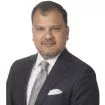Background of FHFA and the Scorecard
The Federal Housing Finance Agency (FHFA) was established under the Housing and Economic Recovery Act of 2008. FHFA has regulatory oversight of the Federal National Mortgage Association (Fannie Mae), Federal Home Loan Mortgage Corporation (Freddie Mac), and the Federal Home Loan Bank System. One of FHFA's statutory mandates is to ensure that Fannie Mae and Freddie Mac (the Enterprises) operate in a safe and sound manner so that they provide stability and liquidity to the mortgage market (both the single family and multifamily markets).
Since September 6, 2008, FHFA has also served as the conservator of the Enterprises. As conservator, FHFA has established three strategic goals for the Enterprises: (1) "maintain, in a safe and sound manner, foreclosure prevention activities and credit availability for new and refinanced mortgages to foster liquid, efficient, competitive, and resilient national housing finance markets;" (2) "reduce taxpayer risk through increasing the role of private capital in the mortgage market;" and (3) "build a new single-family securitization infrastructure for use by the Enterprises and adaptable for use by other participants in the secondary market in the future."1 Each year, FHFA publishes a scorecard by which the Enterprises are assessed in how well they are fulfilling these strategic goals. One of the mandates from the scorecard is that each Enterprise must manage the volume of new multifamily business to remain at or below $35 billion for the current year.
Scorecard Exclusions
There are several categories of loans that do not count toward the $35 billion cap: loans secured by affordable housing (with several different categories), loans secured by small multifamily properties (5 to 50 units), loans for manufactured housing projects, loans on seniors housing assisted living properties (to the extent those units are affordable at 80% AMI or below), and loans to finance energy or water efficiency improvements. The extent to which the loan amount may be excluded from the $35 billion cap correlates, in large part, to the extent that the underlying project is use and rent restricted. While some categories offer an exclusion of the full loan amount (e.g., manufactured housing), others offer only an exclusion of the pro rata portion of the loan amount based on the percentage units affordable at 80% AMI (or some lower affordability threshold).
Fannie Mae's total multifamily finance activity for 2018 was approximately $66 billion, of which $30 billion fell within the cap and $36 billion was in the excluded categories. Freddie Mac's total multifamily finance activity for 2018 was approximately $78 billion, of which $33 billion fell within the cap and $45 billion was in the excluded categories.2
Green Financing Programs
Each Enterprise has established an energy and water efficiency improvement loan program:
- Fannie Mae has the Green Rewards loan program: https://www.fanniemae.com/content/fact_sheet/competitive-advantage-green-financing.pdf
- Freddie Mac has the Green Up and Green Up Plus loan programs: https://mf.freddiemac.com/docs/product/green_advantage_term_sheet.pdf
Under these programs, the full loan amount will be excluded from the cap if the renovations under the program project a minimum 15% reduction in annual property energy consumption and a minimum 15% reduction in annual property water and/or energy consumption. Thus, a property projecting a 30% reduction in annual energy consumption would qualify for the cap exclusion, or a property projecting a 20% reduction in energy consumption combined with a 10% reduction in water consumption would also qualify for the cap exclusion. In addition to the energy and water consumption reduction, all Fannie Mae Green Rewards and Freddie Mac Green Up and Green Up Plus loans must have a third-party data collection firm engaged for ongoing data collection for the life of the loan in order to receive the full exclusion from the cap. This third-party firm can be funded by the borrower, the lender or the Enterprise. Annual reporting is required under these programs.
Through these green financing programs, both Enterprises tout lower interest rates and additional loan proceeds, perks which are also offered to Green Building Certified properties.
Key Takeaways
Borrowers with a general understanding of the applications of green financing, and the 2019 requirements, will be best positioned to reap the benefits of the available incentives. For example, although older properties may more easily qualify for green financing through energy and water saving improvements, newer properties are not excluded from qualifying and may be feasible as well. Recently, a property which was built without LED lights was able to qualify for the green financing program by changing out all of the interior corridors and exterior lights to LED.
Footnotes
1. Federal Housing Finance Agency, Report to Congress 2018.
2. Id.
The content of this article is intended to provide a general guide to the subject matter. Specialist advice should be sought about your specific circumstances.
We operate a free-to-view policy, asking only that you register in order to read all of our content. Please login or register to view the rest of this article.


